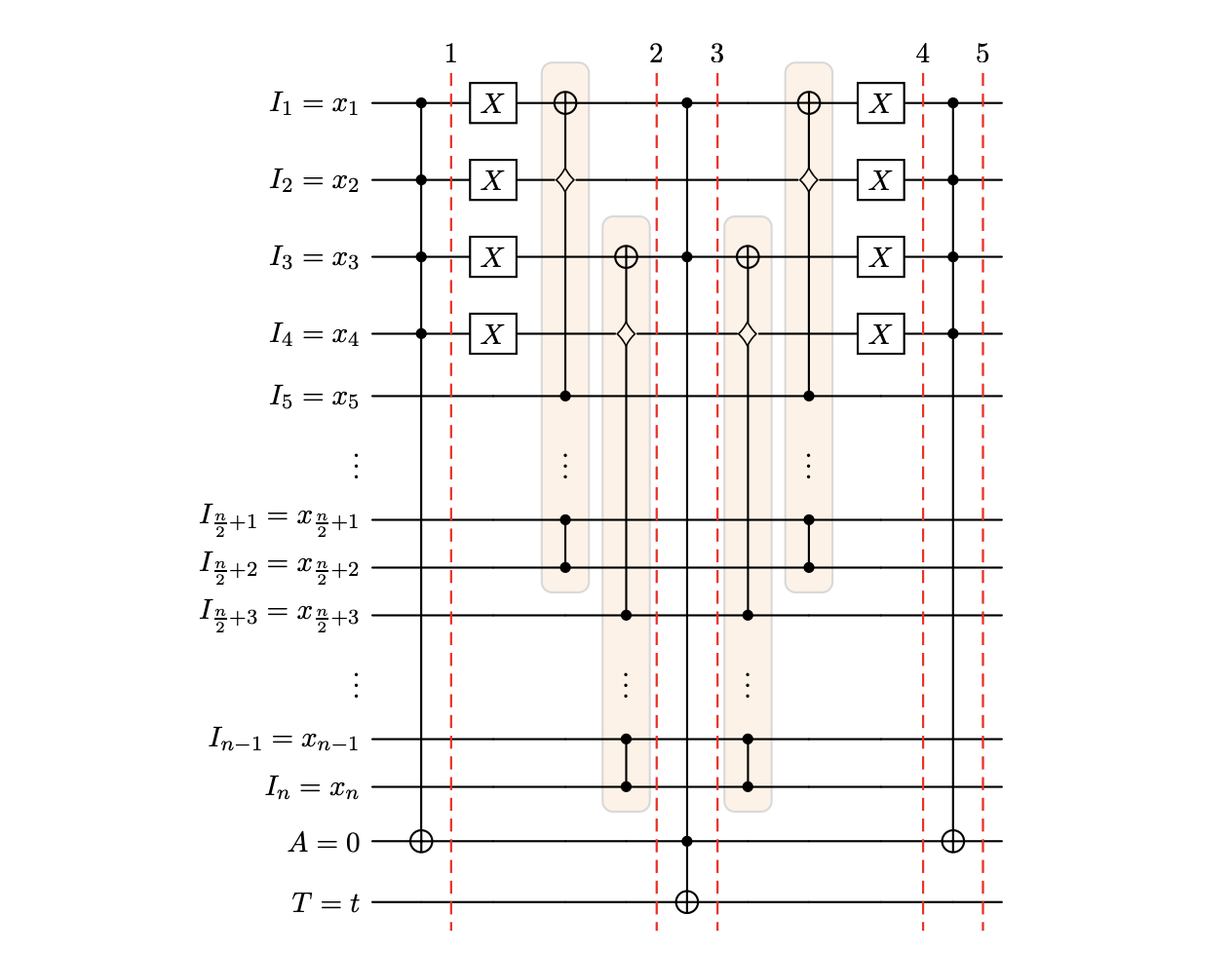Researchers from the Institute of Computing Technology, Chinese Academy of Sciences, and the University of Chinese Academy of Sciences, Beijing, China, have developed new quantum circuits for the Toffoli gate and general multi-controlled unitary. These circuits only require one ancillary qubit and have a depth and size of O(logn) and O(n), respectively. The team created new conditional clean qubits from existing ancillary qubits. This method can also be used to construct an efficient quantum circuit for incrementor, leading to a multiqubit Toffoli gate with a depth of O(log2n) and O(n) size without any ancillary qubits.
What is the Significance of Resource Consumption in Quantum Information Processing?
Quantum information processing is a field that is currently in the Noisy Intermediate-Scale Quantum (NISQ) era. In this era, resource consumption is a significant issue. This is particularly true when implementing multiple controlled operations, which are fundamental building blocks in the field of quantum computing and quantum simulation. The optimization of circuit depth, size, and ancilla count plays a crucial role in this era.
The paper by Junhong Nie, Wei Zi, and Xiaoming Sun from the Institute of Computing Technology, Chinese Academy of Sciences, and the University of Chinese Academy of Sciences, Beijing, China, investigates resource optimization in this context. They design new quantum circuits for the Toffoli gate and general multi controlled unitary, requiring only one ancillary qubit and having only O(logn) depth and O(n) size.
To achieve these results, the researchers explore the potential of ancillary qubits and discover a method to create new conditional clean qubits from existing ancillary qubits. These techniques can also be utilized to construct an efficient quantum circuit for incrementor, leading to an implementation of a multiqubit Toffoli gate with a depth of O(log2n) and size of O(n) without any ancillary qubits.
How Does the n-Toffoli Gate Function in Quantum Computing?
The n-Toffoli gate is a crucial component in quantum computing. It applies the X gate to the target qubit exclusively when all other qubits are at state 1. The application scope of the n-Toffoli gate extends to diverse fields including quantum error correction, quantum machine learning, quantum singular value transformation, quantum simulation, and the implementation of quantum algorithms such as state preparation, unitary synthesis, and Grover’s algorithm.
The n-Toffoli gate demonstrates its usefulness and significance across various domains, showcasing its versatility and potential impact. To achieve a systematic approach to quantum computing, unitary operations are often implemented under elementary universal gate sets such as CNOT and single-qubit gates. The implementation of the n-Toffoli gate is widely concerned.
It is worth noting that regardless of the number of ancillary qubits, any implementation of the n-Toffoli gate must have a depth of Ω(log n) and a size of Ω(n). Researchers are actively exploring the existence of a quantum circuit implementing the n-Toffoli gate with asymptotically optimal circuit and space complexity while minimizing the use of ancillary qubits.
What is the Role of Ancillary Qubits in Quantum Circuit Design?
Ancillary qubits play a significant role in quantum circuit design. In the paper, the researchers consider the exact implementation of the n-Toffoli gate and n-controlled U-gate using a quantum circuit consisting of single qubit gates and a CNOT gate. Their result is that both these two gates can be implemented in O(logn) depth and On size with the help of only 1 ancillary qubit.
To achieve this result, they figure out a novel way of utilizing existing clean ancillary qubits to create new conditionally clean ancillary qubits. This trick may help in designing other quantum circuits too. For instance, they use the technique to design a quantum circuit for incrementor in depth O(log2n) and size On using only 1 clean ancillary qubit.
Furthermore, they exhibit two relevant discussions. In one, they try initiating some study about the relationship between the number of ancillary qubits and gate precision in quantum operation implementations. In the other, they discuss the exchange of ancillary qubits and extra energy levels.
How Does the Quantum Circuit for Incrementor Function?
The quantum circuit for incrementor is designed to utilize existing clean ancillary qubits to create new conditionally clean ancillary qubits. This circuit computes x to x+1 mod 2^n for all x. The design of quantum arithmetic circuits has become a welcomed topic owing to its broad applications in quantum computing, such as Shor’s algorithm.
The researchers’ approach gives the first polylogarithmic implementation of this operation with on ancillary qubits. As a byproduct, this implementation also leads to a quantum circuit for the nToffoli gate with no ancillary qubit that has depth O(log2n) and size On.
What is the Relationship Between Ancillary Qubits and Extra Energy Levels?
The researchers also explore the power of ancillary qubits from the perspective of resource theory. They demonstrate that without the assistance of ancillary qubit, any quantum circuit implementation of multiqubit Toffoli gate must employ exponential precision gates. This finding indicates a significant disparity in computational power of quantum circuits between using and not using ancillary qubits.
In addition, they discuss the exchange of ancillary qubits and extra energy levels in quantum circuit design. Extra energy levels help in implementing a variant of multiqubit operations. For example, qutrits can be used to implement a generalized n-Toffoli gate with a depth of O(logn) without ancillary qutrit. It is also known that incrementor can be implemented on a qutrit system in O(log2n) depth without ancillary qutrit.
The researchers remark that there are efficient exchanges between the qubit system and the qudit system. They also define some bounded-space complexity classes from the computation theory’s perspective and raise some conjecture about these classes.
The article named: Quantum circuit for multi-qubit Toffoli gate with optimal resource, was published in arXiv (Cornell University) on 2024-02-07, . The authors are Junhong Nie, Wei Zi and Xiaoming Sun. Find more at https://doi.org/10.48550/arxiv.2402.05053

